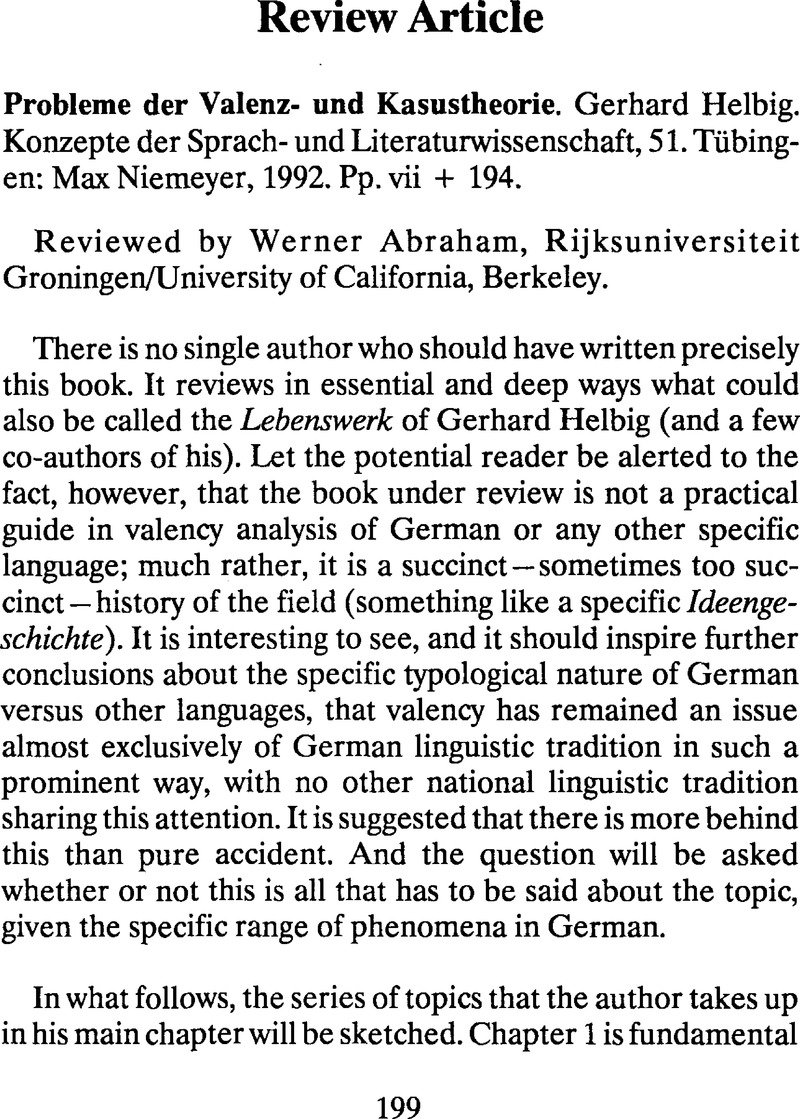No CrossRef data available.
Article contents
Probleme der Valenz- und Kasustheorie
Published online by Cambridge University Press: 05 December 2008
Abstract
An abstract is not available for this content so a preview has been provided. Please use the Get access link above for information on how to access this content.

- Type
- Review Article
- Information
- Copyright
- Copyright © Society for Germanic Linguistics 1993
References
WORKS CITED
Abraham, Werner. 1989. “Verbal substantives in German.” Syntactic phrase structure phenomena. Ed. Bhatt, Christa/Lobel, Elisabeth and Schmidt, Claudia. Amsterdam: John Benjamins. Pp. 79–112.CrossRefGoogle Scholar
Czepluch, Hartmut. 1987. “Kasus im Englischen und Deutschen: Überlegungen zu einer Theorie des abstrakten Kasus.” Unpublished Habilitationsschrift. Göttingen.Google Scholar
Czepluch, Hartmut. 1988. “Kasusmorphologie und Kasusrelationen: Überlegungen zur Kasustheorie am Beispiel des Deutschen.” Linguistische Berichte 116: 275–310.Google Scholar
Fanselow, Gisbert. 1986. Untersuchungen zur Universalgrammatik am Beispiel des Deutschen. Studien zur Grammatik des Deutschen, 29. Tübingen: G. Narr.Google Scholar
Fillmore, Charles. 1968. “The case for case.” Universal in linguistics theory. Eds. Bach, Emmon and Harms, Robert T.. (German translation ed. by Abraham, W., Frankfurt 1971.) New York.Google Scholar
Heringer, Hans-Jürgen. 1967. “Beitrag zur allgemeinen Kasuslehre.” Travaux du Cercle Linguistique de Prague 6: 240–288.Google Scholar
Keenan, Ed and Comrie, Bernard 1977. “Noun phrase accessibility and universal grammar.” Linguistic inquiry 8: 63–99.Google Scholar
Vater, Heinz. 1978. “Valenz und freie Adjunkte.” Valence, deel case, and sentential functions. Ed. Abraham, Werner. Complementary series of studies in language, 1. Amsterdam: John Benjamins.Google Scholar


